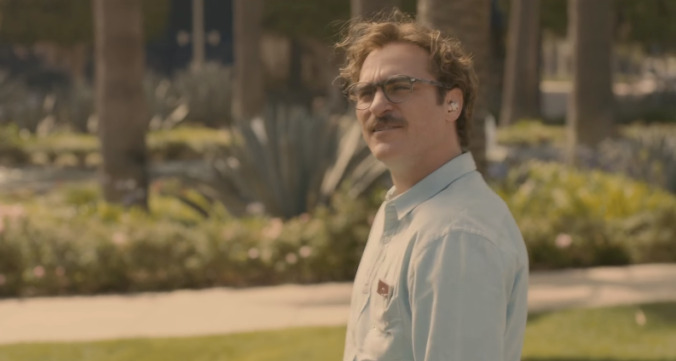How Her built a sci-fi future you might actually want to live in
In Her, Spike Jonze’s 2013 contemplation of intimacy in an age of sophisticated artificial intelligence, the future doesn’t look as bleak as sci-fi viewers might expect. Joaquin Phoenix’s Theodore Twombly navigates a future Los Angeles that, even polluted with claustrophobia-inducing crowds and a constant layer of industrial smog, is far more inviting than the dismal grit of so much other speculative fiction.
In his video on the film, YouTube’s kaptainkristian looks at how Jones (and production designer K.K. Barrett) managed to pull off this vision. The clip examines the many details that give Her’s take on the future a genuine warmth, from positioning mirrors on buildings surrounding Twombly’s apartment set and increasing the space’s natural light to foregoing the typical “high-tech” shorthand of cold blue tones for reds and browns.
Probably most importantly, the video notes how advanced technology itself is presented in the movie. Rather than the inorganic sheen of white iPhone cases and metallic desktop monitors, Her is filled with computers that resemble comfortable furniture and wooden picture frames—the sort of stuff that hides its digital nature so that you can believe it’s tangible enough to fall in love with.
It’s a good, quick analysis that advocates, in part, for more sci-fi willing to imagine the positive effects of technology instead of fixating on worst-case scenarios. The only part of this well-argued and -presented video that doesn’t fit, really, is Twombly’s pants, which he pulls up to his nipples for some reason. If that’s not dystopic, nothing is.
